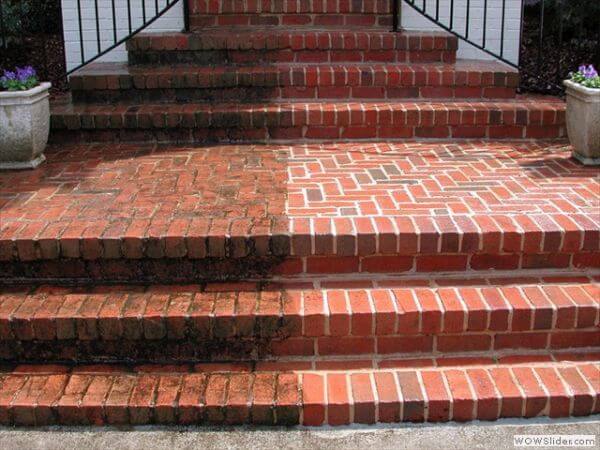
29 Jan Cleaning old Masonry
Whatever type of finish you intend to apply to a wall, all loose debris and dirt must be brushed off with a stiff-bristled brush. Don’t use a wire brush unless the masonry is badly soiled as it may leave scratch marks.
Brush along the mortar joints to dislodge loose pointing. Defective mortar can be repaired easily at this stage, but if you fail to disturb it now by being too cautious, it will fall out as you paint, creating far more work in the long run.
Removing unsightly stains
Improve the appearance of stone or brick left in its natural state by washing it with clean water. Play a hose gently onto the masonry while you scrub it with a stiff-bristled brush. Scrub heavy deposits with half a cup of ammonia added to a bucketful of water then rinse again.
Abrade small cement stains or other marks from brickwork with a piece of similar-coloured brick, or scrub the area with a household kitchen cleanser. Remove spilled oil paint from masonry with a proprietary paint stripper. Put on gloves and protective goggles, then paint on the stripper stippling it into the rough texture of the masonry. After about ten minutes, remove it with a scraper and a soft wire brush. If paint remains in crevices, dip the brush into the paint stripper and gently rub it with small circular strokes. When the wall is clean, rinse with water.
Re-Pointing Masonry
The mortar joints between bricks and stone can become porous with age, allowing rainwater to penetrate to the inside, causing damp patches to appear, ruining decorations. Replacing the mortar pointing, which deflects the water, is quite straightforward but time consuming. Tackle only a small, manageable area at a time, using a ready-mixed mortar or your own mix.
Applying the pointing mortar:
Rake out the old mortar pointing with a thin wooden stick to a depth of about 12mm. Use a cold chisel or a special plugging chisel and a hammer to dislodge firmly embedded sections, then brush out the joints with a stiff-bristled brush.
Flick water into the joints using an old paintbrush, making sure the bricks or stones are soaked so they will not absorb too much water from the fresh mortar. Mix up some mortar in a bucket and transfer it to a mortar board. If you’re mixing your own mortar, use the proportions 1 part cement: 1 part lime: 6 parts sand. If the colour of the mortar needs to be colour matched, then experiment first before making the final batch.
If you have any further questions please call our office.
We want you the reader to write to us on, any Building matters and questions or if you seek advice, we will gladly answer any topic that you wish us to discuss, so please send your letters to “BHIS” C/O. 17 Battye Road, Kardinya, W.A. 6163. Or fax/ph. (09) 331-3031



